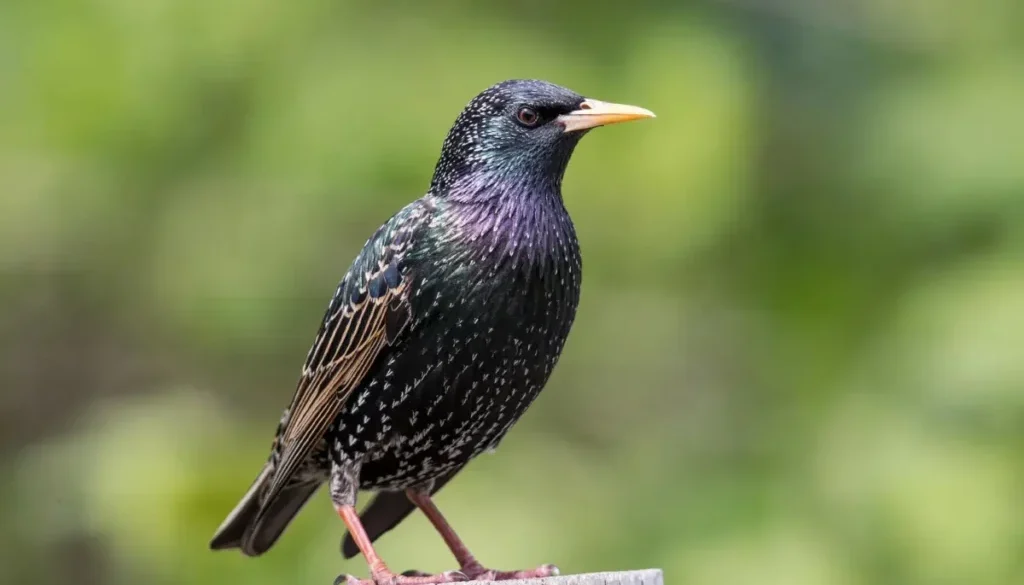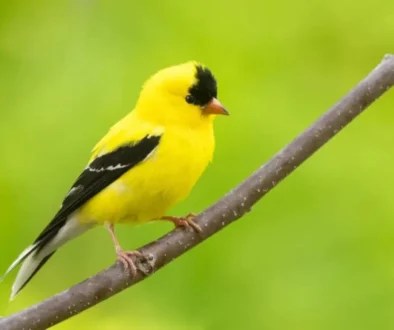European Starling (Sturnus vulgaris)
The Adaptable and Social Songbird
The European Starling is a highly adaptable bird known for its iridescent plumage, complex vocalizations, and ability to thrive in diverse environments. Originally from Europe, this species was introduced to North America in the late 19th century and has since become one of the most widespread and abundant birds on the continent.
Physical Characteristics
European Starlings are medium-sized songbirds, measuring about 7.5 to 8.5 inches in length with a wingspan of 12 to 16 inches. During the breeding season, their plumage is a glossy black with a greenish or purplish sheen, covered in small white spots. In the non-breeding season, their feathers become more speckled and less glossy. Starlings have short tails, pointed wings, and a long, slender bill that is yellow during the breeding season and darker at other times. Their legs are pinkish-red, adding to their distinctive appearance.
Habitat and Range
European Starlings are highly versatile birds that can be found in a wide range of habitats, including urban areas, farmlands, forests, and grasslands. They are particularly associated with human-modified environments, such as cities and agricultural fields, where they can find abundant food and nesting sites. Starlings are now widespread across North America, as well as in parts of South America, Australia, and New Zealand, where they have been introduced.
Diet and Feeding Behavior
Starlings have a varied diet that includes insects, seeds, fruits, and invertebrates. They are particularly fond of insects such as beetles, grasshoppers, and caterpillars, which they hunt by probing the soil with their sharp bills. In urban areas, starlings are opportunistic feeders, often scavenging for food scraps or raiding bird feeders. Their ability to exploit a wide range of food sources has contributed to their success in diverse environments.
Breeding and Nesting
European Starlings are highly social birds that often nest in large colonies. They prefer to nest in cavities, such as holes in trees, buildings, or nest boxes. The female builds a nest using grass, leaves, and feathers, where she lays 4 to 6 eggs. Both parents are involved in incubating the eggs and feeding the chicks, which fledge about three weeks after hatching. Starlings are known for their aggressive behavior during the breeding season, often competing with native species for nesting sites.
Vocalization and Mimicry
One of the most distinctive features of the European Starling is its complex vocalizations. Starlings are excellent mimics, capable of imitating the songs of other birds, as well as mechanical sounds like car alarms and cell phones. Their songs are a mix of whistles, clicks, and warbles, often delivered in a continuous, rambling sequence. This ability to mimic has made them fascinating subjects for study in the fields of ornithology and animal behavior.
Impact on Ecosystems and Conservation
The introduction of European Starlings to North America has had significant ecological impacts, particularly on native bird species. Starlings are highly competitive and often outcompete native birds for food and nesting sites, leading to declines in some populations. Despite these negative effects, starlings are protected under the Migratory Bird Treaty Act in the United States, although they are not native to the region. Their populations remain robust, and they are currently listed as a species of least concern.




